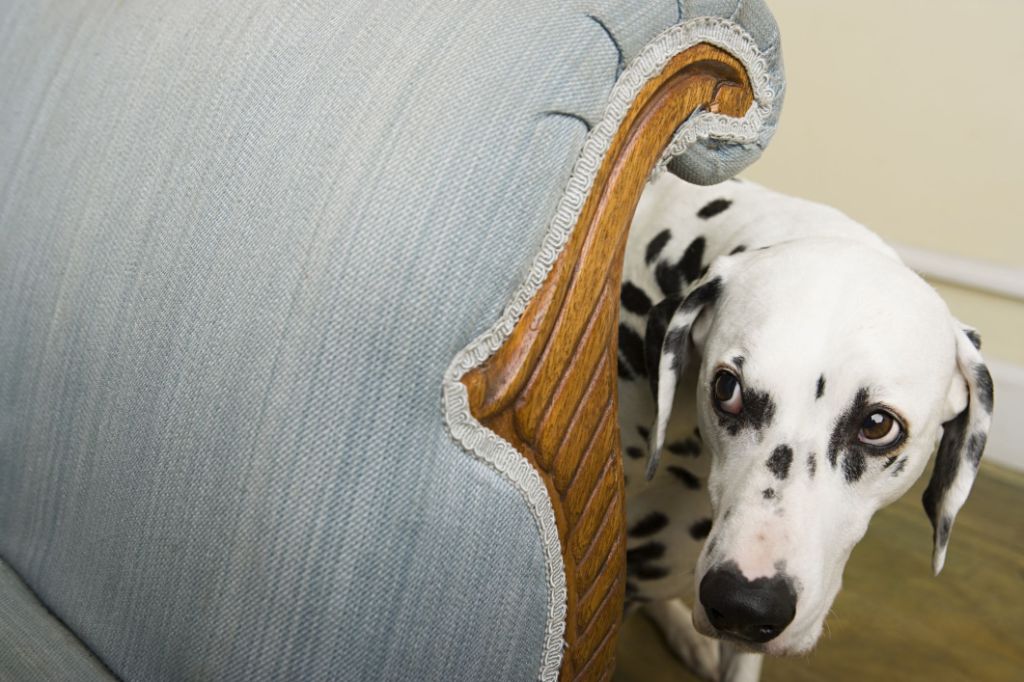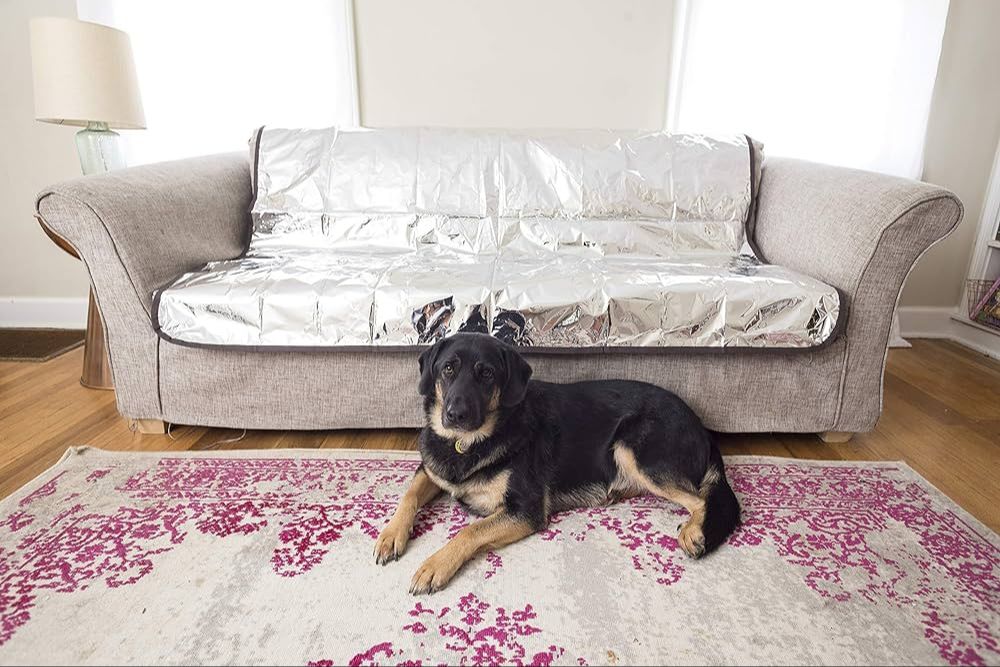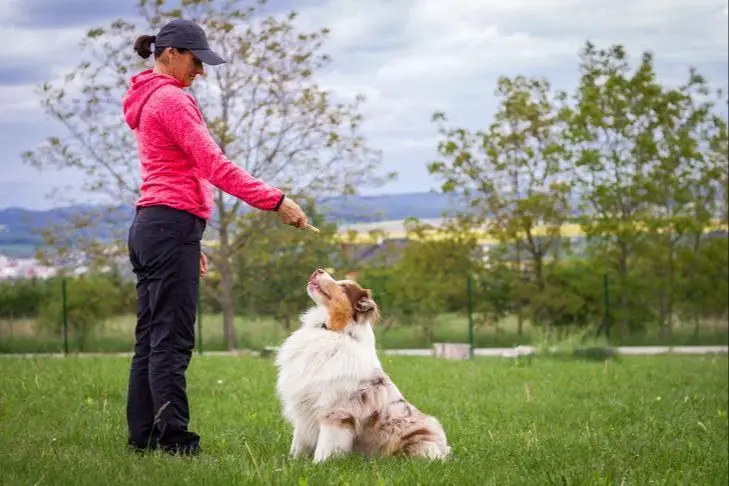Why Keep Your Dog Off the Couch
One of the main reasons to keep your dog off the couch is for health considerations. Dog hair and dander can trigger allergic reactions or exacerbate respiratory issues in some people. According to PetLovers, dog hair contains proteins that humans can be allergic to, resulting in contact dermatitis or hives. Additionally, dog hair can carry pollen, mold, and dust mites that cause respiratory problems in sensitive individuals. Allowing dogs on furniture spreads these allergens throughout the home. For those with allergies or asthma, limiting dogs to non-upholstered surfaces can help reduce allergen exposure.
Dog hair also tends to collect bacteria, including E. coli and salmonella, according to FurMagic. While minor for healthy individuals, exposure to these bacteria can potentially cause illness in young children, the elderly, or immunocompromised people. Keeping dogs off furniture reduces the risk of spreading bacteria to surfaces that humans contact frequently.
By reserving the couch and other furniture for human use only, you can create a cleaner and healthier environment for your family.
Understanding Your Dog’s Behavior
Understanding why your dog may feel the need to get on your furniture and sleep there, even if you would rather them not, is an important first step. Dogs may exhibit certain behaviors like trying to climb and sleep on furniture for a variety of reasons.
Your dog may be looking for a comfortable, safe space of their own since they can’t get on the couch or bed. Most dogs like being up high to survey their environment and feel protected, so when you deny them furniture it can make them feel insecure. According to experts, this can lead to territorial behavior as they try to claim the couch or bed as their own [1].
Separation anxiety may also contribute to your dog’s desire to sleep somewhere that smells like you when you are away. If your dog struggles with being alone when you leave the house, they may see sleeping on your couch or bed as a way to feel closer to you [2].

It’s a good idea to observe when and why your dog tries to get on the furniture. If it seems related to stress, boredom, or insecurity, addressing the root cause can help curb the behavior.
Trying Aluminum Foil
One common home remedy to deter dogs from climbing on the furniture is to use aluminum foil. The reflective surface and crinkly noise can be unpleasant and startling for dogs. According to an article on Apartment Therapy, “Try placing a piece of aluminum foil (or bubble wrap) on the area in question and leave it for two or three days. Remove the foil, but don’t allow your pet on the furniture in question. The next time he tries to jump up, he will remember the unpleasant experience.”1 The aluminum foil provides an unpleasant sensation for the dog’s paws, which deters them from jumping up again.
Preparing the Aluminum Foil
To prepare the aluminum foil for deterring your dog from getting on the couch, start by purchasing a roll of standard aluminum foil from your local grocery store or retailer. You’ll want the shiny side of the foil showing when you place it on the couch.
Unroll enough foil to completely cover the surface of the couch where your dog likes to sit or lay down. Make sure there are no gaps in the foil and that the shiny side will be facing up once applied. Smooth out any wrinkles or creases to create a flat, consistent layer over the entire couch cushion or seat.
The smooth, shiny surface of the aluminum foil will be slippery and unappealing to your dog when they go to jump up on the couch. Having the foil cover the whole area will prevent them from being able to find a “safe” spot without the foil to lay on.
Introducing the Foil to Your Dog
When you first introduce aluminum foil to your dog, it’s important to monitor their initial reaction closely. Some dogs may be fearful or anxious when they first encounter the crinkly texture and sound of foil. According to veterinarians, this is a normal response and you shouldn’t be too concerned if your dog seems wary at first.
Place a sheet of foil on the couch where your dog likes to sit. Then allow your dog to enter the room and observe what they do. Some dogs may avoid the foil entirely or seem reluctant to jump up. Others may tentatively step on the foil and immediately retreat when they feel and hear the unusual sensation under their paws. Give your dog time to investigate the foil without forcing them onto it.
Your dog may sniff, lick or paw at the foil out of curiosity. Allow this initial exploration as it will help them become accustomed to this novel item in their environment. Just supervise to ensure they don’t ingest the foil which could cause gastrointestinal obstruction or damage.
Remain calm and patient during this introduction process. If you tense up or overreact to your dog’s wariness, it could further stress them out. Speak to them in a happy, relaxed tone and provide praise and treats for calm behavior around the foil.
Consistency is Key
For the aluminum foil method to work, it’s crucial that you are consistent about keeping the foil on the couch every day. Dogs are creatures of habit, so you need to persistently reinforce that the couch is an unacceptable area before your dog will learn to avoid it.

Check the foil every day when you get home from work or first thing in the morning. Smooth it out again if your dog has messed it up. Replace sections that are torn or ripped through completely. Over time, as the foil loses its novelty, your dog will associate the couch with an unpleasant texture and stop trying to get on it. But this takes regular reapplication and maintenance of the foil barricade.
Be patient and stick with it. As long as the aluminum foil is a daily barrier, eventually your dog will seek out alternative, more comfortable sleeping spots. Just remember to keep the foil refreshed and intact. Consistency is the key to training your dog to avoid the couch for good.
Other Deterrents
There are some other effective deterrents you can try to keep your dog off the couch that don’t involve aluminum foil. Many dogs strongly dislike certain smells and textures.
Citrus smells are often very effective for deterring dogs. You can use citrus-scented sprays on the couch, or rub slices of lemon, orange, grapefruit etc. directly on the couch cushions and armrests. The strong citrus smell is unpleasant and helps teach the dog to avoid the area [1].
Double-sided sticky tape is another option. Place strips of double-sided tape on the couch where your dog likes to jump up. When they touch the tape, they will get a sticky surprise they won’t like. This can help deter them from jumping on the couch [2].
Positive Reinforcement
One of the most effective ways to train a dog is through positive reinforcement. This involves rewarding your dog with treats, praise, or their favorite toys every time they demonstrate the desired behavior, which in this case is staying off the couch. As explained by the Humane Society, positive reinforcement training uses rewards to increase desired behaviors. When you reward your dog for staying on the floor instead of jumping on the couch, you are positively reinforcing that behavior.
To implement positive reinforcement, watch your dog closely whenever they enter the room with the couch. As soon as they choose to lay on the floor instead of hopping up, immediately reward them with an enthusiastic “Good dog!” and a tasty treat. You can even throw in a favorite toy. This will teach your dog that staying off the couch results in something rewarding. With consistent rewards over time, your dog will learn to avoid the couch entirely.

As noted in this AKC article, the key is rewarding your dog every time they demonstrate the desired behavior. So make sure to have treats or a toy ready anytime your dog enters the room with the tempting couch. With persistence and positivity, your dog will soon associate the floor with getting treats and praise rather than jumping on the couch.
Providing Alternatives
While keeping your dog off the couch takes training and persistence, it’s also important to provide them with suitable alternatives so they have a comfortable place to rest. Some options to consider include:
Dog beds: Providing a high quality orthopedic or memory foam dog bed is an excellent alternative to letting your dog on the couch. According to The 7 Best Couches for Dogs of 2023, dog beds with bolsters provide a sense of security and are better for dogs that like to sprawl out.
Designated chair: Allowing your dog to have their own special spot, like a dog-friendly chair or ottoman, gives them a place of their own while keeping them off the main furniture. Be sure to pick furniture that is easy to clean and durable enough to withstand dog nails and activity.
When to Seek Professional Help
If using aluminum foil proves ineffective at keeping your dog off the couch, it may be time to seek help from a professional dog trainer. Getting professional assistance is recommended if your dog’s couch behavior persists despite consistent training efforts on your part. According to this article, you should hire a dog trainer at the first sign of an ongoing behavioral issue rather than waiting until someone gets hurt. A professional can properly assess why your dog is on the couch and design an effective training plan. As explained by this source, trusting an experienced trainer is smart when dealing with a long-term decision about your pet’s behavior. If the aluminum foil trick doesn’t work, contact a certified trainer to keep your dog off the couch for good.
